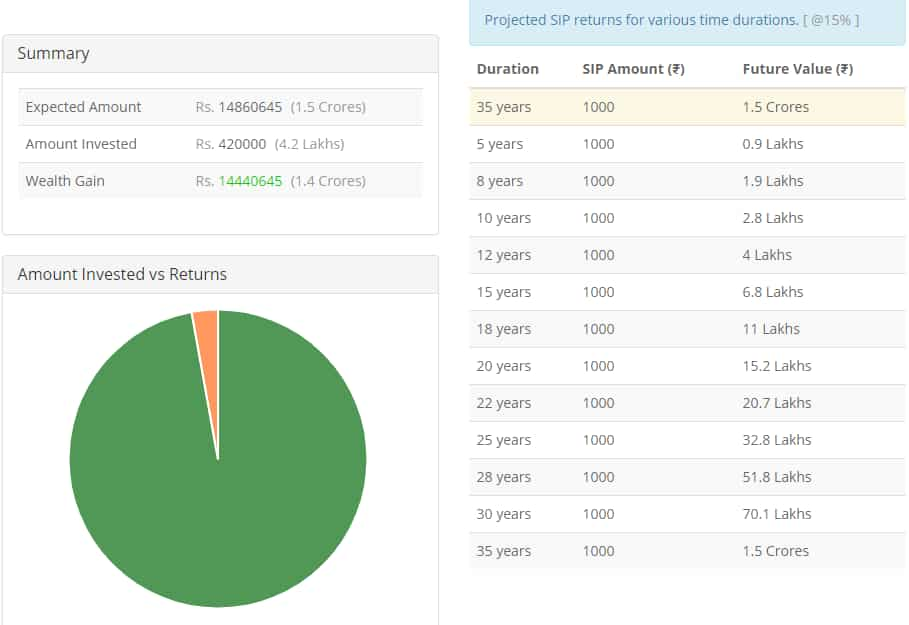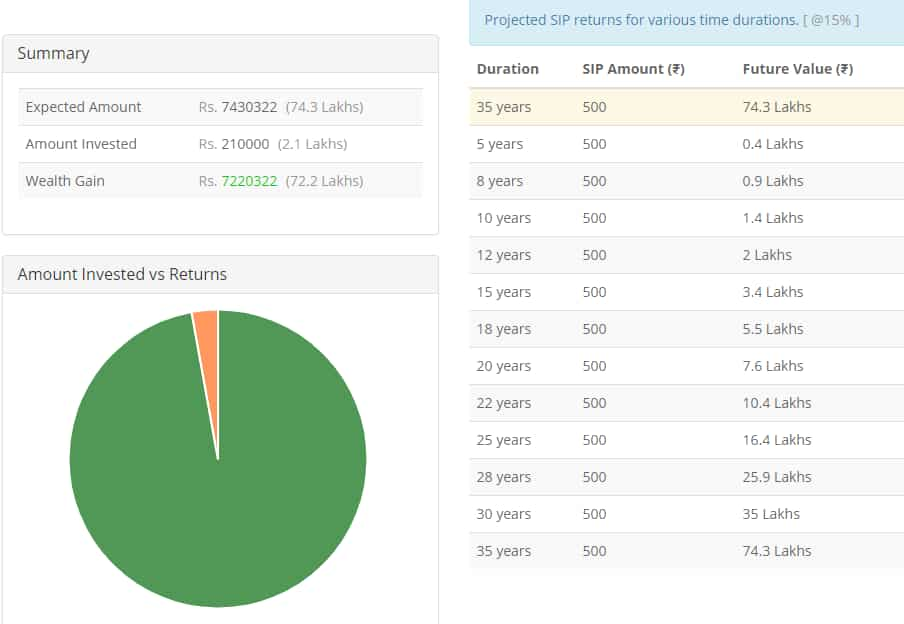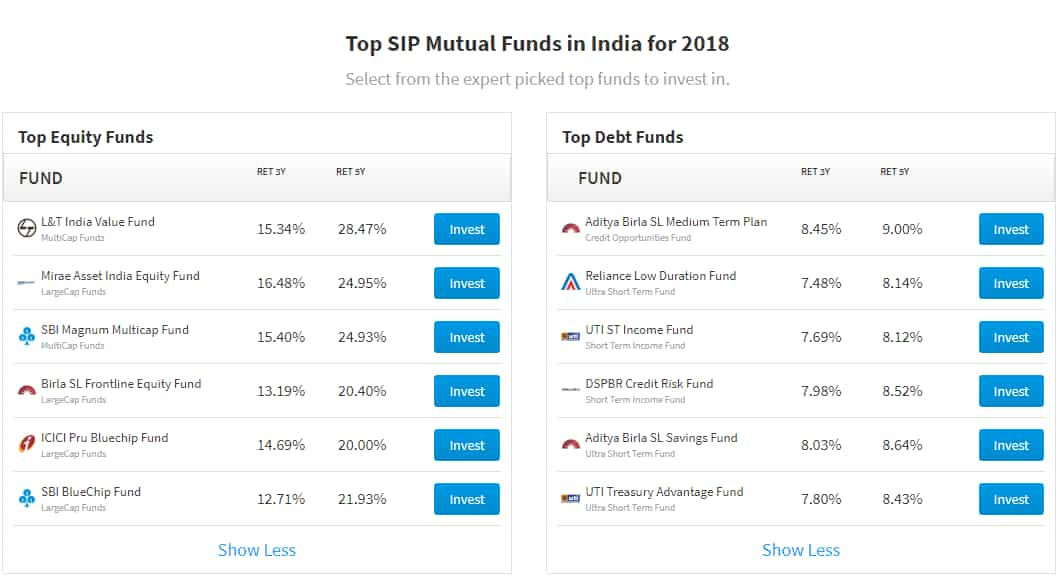New Year 2019 investment resolution: Use SIPs to turn Rs 2000 into Rs 3 cr
Among many investment tools, one that stands out and is very popular is Systematic Investment Plan (SIP). As the name suggests, this scheme offers discipline, good returns and market related gains. Simply put, SIPs allow you to invest a fixed sum every month in your favourite mutual fund scheme.

It’s 2019 excitement time! Many of us are busy planning on how to celebrate December 31. This day generally has high level excitement amongst family and friends, as many plan an overseas trip, shop, burst firecrackers, etc. But, it is also the time when many of us would make a new year resolution. Hence, why not involve investment as your new year plan for 2019. Why? Because, everyone loves to gain hefty sum on their hard earned money. To make it easier, all you would need is Rs 2000 in your 2019 for becoming rich.
There many investment options in India, which makes it important to understand which product suits your need the most. There is a saying with maximum investment comes with maximum returns, but not all can afford it. Thereby, a Rs 2000 per month SIP can be best option for lower-middle and middle class citizens. Guess what! You can even become crorepati by investing just Rs 2000 every month.
Among many investment tools, one that stands out and is very popular is Systematic Investment Plan (SIP). As the name suggests, this scheme offers discipline, good returns and market related gains. Simply put, SIPs allow you to invest a fixed sum every month in your favourite mutual fund scheme.
One can invest in SIP on various intervals like monthly, quarterly and yearly. Generally, monthly investment are best in SIPs, as it does not require heavy amount from an investor and also deducts money directly from your savings account.
SIPs stand out with lowest lock in period and tax-saving options. With an SIP, one can also avail the benefit of equity linked saving schemes (ELSS) which has lowest 3-year lock in period and gives higher returns compared to traditional method of fixed deposits.
Not only this, an SIP made in ELSS schemes also offers tax deduction under section 80C of Income Tax department in the EEE format which includes tax exemption, wealth accumulation and zero exit load.
There are two methods which greatly help investors earn big through SIPs.
Firstly is rupee-cost averaging. As we are aware that market is sentiment driven and unpredictable, this creates an issue on when is the best time for investment. With rupee-cost averaging, an investor with its invested SIP amount earns more units when the price is low and earns less units when the price is high.
Second would be power of compounding. Every amount you invest, you earn interest on it. This interests get compounded and accumulated over a period of time. The higher the SIP tenure, the higher would be your return.
A person can begin investment in SIP with just Rs 500 and there is no maximum limit. However, one will always advise you stay invested in SIPs for longer term. Why? Let’s find out.
Just like every income from other sources is taxable, even the extra sum you earn in SIPs falls under this prey. For instance, if you begin an SIP of Rs 5,000 a month in equity funds for a year, then each individual SIP is seen as fresh investment. Thereby, if you decide to redeem your gains after 12 months, then only gains earned on first SIP will be tax free as that investment would only complete one year. The remaining would be liable for short term capital gains tax.
If you keep your SIP for more than a year, then they fall under long-term gains on which taxes would still be lower compared to short term ones.
Let’s understand, how much do you earn if you invest Rs 500, Rs 1000 and Rs 2000 per month.
If you invest Rs 2,000 a month in SIP on projected interest rate of 15%, then you will gain up to Rs 1.5 lakh in 5 years, Rs 5.6 lakh in 10 years, Rs 13.5 lakh in 15 years, Rs 30.3 lakh in 20 years, Rs 65.7 lakhs in 25 years, Rs 1.4 crores in 30 years and massive Rs 3 crores in 35 years.

(Image source: SIPCalculator)
In 35 years, you would have invested about Rs 8.4 lakh which will make your wealth gains upto Rs 2.9 crores.
Coming to Rs 1,000 investment every month on same estimated interest rates, then you will gain up to Rs 0.9 lakhs in 5 years, Rs 2.8 lakhs in 10 years, Rs 6.8 lakhs in 15 years, Rs 15.2 lakhs in 20 years, Rs 32.8 lakhs in 25 years, Rs 70.1 lakhs in 30 years and a whopping Rs 1.5 crores in 35 years.

(Image Source: SIPCalculator)
On investing Rs 1000 every month in SIPs for 35 years, you gain wealth of Rs 1.4 crores on your investment of just Rs 4.2 lakh for the period.
However, if you cannot afford the above mentioned value then begin an SIP in 2019 with just giving away Rs 500 every month from your pocket. If we take into consideration the 15% interest rate, then in 5 years an investor will gain Rs 0.4 lakhs, in 10 years Rs 1.4 lakhs, in 15 years Rs 3.4 lakhs, in 20 years Rs 7.6 lakhs, in 25 years Rs 16.4 lakhs, in 30 years Rs 35 lakhs and by end of 35 years a person stands with over Rs 74 lakh.

(Image Source: SIPCalculator)
For 35 years if you invested Rs 500 every month in SIP, then your total investment would stand at just Rs 2.1 lakh and wealth gains would be Rs 72.2 lakhs.
Here’s a list of top SIP mutual funds in India during 2018, who have given returns between 7% to over 28%, as per ClearTax report.

How to invest in SIPs in 2019:
Firstly, chalk down your monthly expenses, and as per your requirement decide how much you are capable to invest in SIPs.
Secondly, ensure your purpose and specific goals when you want to make an investment in SIPs. For instance, you plan an SIP for buying a house in future, hence, accordingly you should decide how much is your investment requirement.
Have proper KYC documents and bank account documents like voter identity, driving license, passport, ,debit card, passbook, PAN card and Aadhaar card.
Before opening an SIP consult with advisors on your investment options. Diversify your portfolio between equity and debt mutual funds.
Remember to keep the decided amount in your bank account every month, so that it can be used to investment in SIP.
Have a knowledge of the mutual funds you have invested via SIPs. Track them on multiple occasions and do not blindly depend upon broking firms investment options make your own analysis.
Well now that everything is said and done, let’s make a new year resolution. If you plan to investment from 2019, then a piece of SIP can be your resort. One can also retire a crorepati with SIPs.
Get Latest Business News, Stock Market Updates and Videos; Check your tax outgo through Income Tax Calculator and save money through our Personal Finance coverage. Check Business Breaking News Live on Zee Business Twitter and Facebook. Subscribe on YouTube.
RECOMMENDED STORIES

Rs 3,500 Monthly SIP for 35 years vs Rs 35,000 Monthly SIP for 16 Years: Which can give you higher corpus in long term? See calculations

Looking for short term investment ideas? Analysts suggest buying these 2 stocks for potential gain; check targets

SBI 444-day FD vs PNB 400-day FD: Here's what general and senior citizens will get in maturity on Rs 3.5 lakh and 7 lakh investments in special FDs?
03:15 PM IST









 Top 5 SIP mistakes one must avoid while investing in 2025
Top 5 SIP mistakes one must avoid while investing in 2025 Net inflows in SIPs up 233% in India this year, mutual fund industry sees 135% growth
Net inflows in SIPs up 233% in India this year, mutual fund industry sees 135% growth Retirement Planning: SWP vs dividend plan, which one is better for regular income for retirees and why? Know from experts
Retirement Planning: SWP vs dividend plan, which one is better for regular income for retirees and why? Know from experts Maximise Your Investment Using Step-up SIP: Raising Rs 5,000/month contribution by 10% annually can make a huge difference; see example
Maximise Your Investment Using Step-up SIP: Raising Rs 5,000/month contribution by 10% annually can make a huge difference; see example Building a retirement corpus: How much should you invest at different life stages to build a corpus of Rs 4 crore; see examples
Building a retirement corpus: How much should you invest at different life stages to build a corpus of Rs 4 crore; see examples